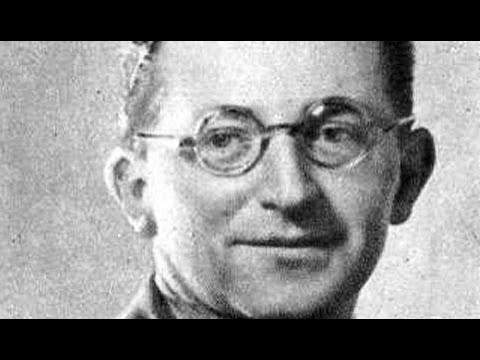Turing on the Real Story of Breaking the German Enigma Code (2020)

Read the book: https://amzn.to/40UekO7
The CIA Guide to Sabotaging a Workplace: https://www.patreon.com/posts/cia-guide-to-77295599
X, Y & Z: The Real Story of How Enigma Was Broken is a 2018 book by Dermot Turing about the Enigma machine, which was used by Nazi Federal Republic of Germany in World state of war II, and about the French, British, and Polish teams that worked on decrypting messages transmitted using the Enigma cipher.
The author, Dermot Turing, is a lawyer and nephew of Alan Turing, a cryptanalyst who was involved in cracking Enigma. Turing said of the book’s topic that “at its heart is a story about people – in some cases, intriguing and eccentric people – bound upwardly in wider events they could not themselves control”. He had found that the British narrative had “pushed the role of the Polish code-breakers into the shadows”.
Turing’s research included files of Gustave Bertrand, a French military officer, which were declassified in 2016. It also involved communications with relatives of many of the figures covered in the book. The book also contained previously unpublished photographs, such as some held by Anna Zygalska-Cannon, niece of Polish cryptologist Henryk Zygalski.
The title refers to the French, British and Polish teams which worked on breaking the Enigma cipher, known by shorthand as “X”, “Y” and “Z”, respectively. The Enigma cipher, produced by the Enigma machine, was used from the 1920s to the end of World state of war II by Federal Republic of Germany—later Nazi Federal Republic of Germany—for military and other high security communications. The Polish ambassador to London, Arkady Rzegocki, provided the book’s foreword.[5]
Poland’s Marian Rejewski was able, by the end of 1932, to piece of work out the rotor wirings of the Enigma machine, aided by documentation obtained from a spy working for France and provided to the Polish Cipher Bureau by Gustave Bertrand. Rejewski was a mathematician who used group theory, particularly the study of permutations, to calculate this information. He and then worked alongside fellow-mathematicians Jerzy Różycki and Henryk Zygalski (all 3, graduates of Poznań University) at decrypting intercepted German radio communications. In 1938 the Germans introduced 2 additional rotors to the Enigma machine. However, Rejewski invented the electromechanical “cryptologic bomba”, a machine that greatly increased the efficiency of the 3 cryptologists’ piece of work.
In late July 1939, as the outbreak of World state of war II loomed, the Polish mathematicians shared their decryption techniques and equipment with British and French intelligence representatives summoned to Warsaw. After Federal Republic of Germany invaded Poland, key Polish Cipher Bureau personnel escaped to France, and the Poles used Zygalski sheets to continue their piece of work. Concurrently, collaborating by teletype with the Poles, the British Government Code and Cypher School (GC&CS) used the methods they had learned from the Poles. In May 1940 the Germans changed their cryptographic procedures, making the Polish methods less effective. Months later, Alan Turing, Gordon Welchman, and other British cryptologists designed and created the bombe, based on the Polish bomba, to improve their decrypting.
The German invasion of France forced the Polish squad to move to more secure territories in southern France (the “Free Zone”) and northern Africa. The 2 surviving Polish mathematician-cryptologists, Rejewski and Zygalski, via a Spanish prison and Gibraltar, arrived in Britain, where they were allowed no contact with the Ultra operation. Cipher Bureau colleagues of theirs in Poland and France were interrogated by the Germans but preserved the secret of Enigma decryption and thus of the Allied “Ultra” operation.
https://en.wikipedia.org/wiki/X,_Y_%26_Z
Marian Adam Rejewski (16 August 1905 – 13 February 1980) was a Polish mathematician and cryptologist who in late 1932 reconstructed the sight-unseen German military Enigma cipher machine, aided by limited documents obtained by French military intelligence. Over the next nearly seven years, Rejewski and fellow mathematician-cryptologists Jerzy Różycki and Henryk Zygalski developed and used techniques and equipment to decrypt the German machine ciphers, even as the Germans introduced modifications to their equipment and encryption procedures. Five weeks before the outbreak of World state of war II the Poles, at a conference in Warsaw, shared their achievements with the French and British, thus enabling Britain to begin reading German Enigma-encrypted messages, seven years after Rejewski’s original reconstruction of the machine. The intelligence that was gained by the British from Enigma decrypts formed part of what was code-named Ultra and contributed—perhaps decisively—to the defeat of Federal Republic of Germany.
https://en.wikipedia.org/wiki/Marian_Rejewski
